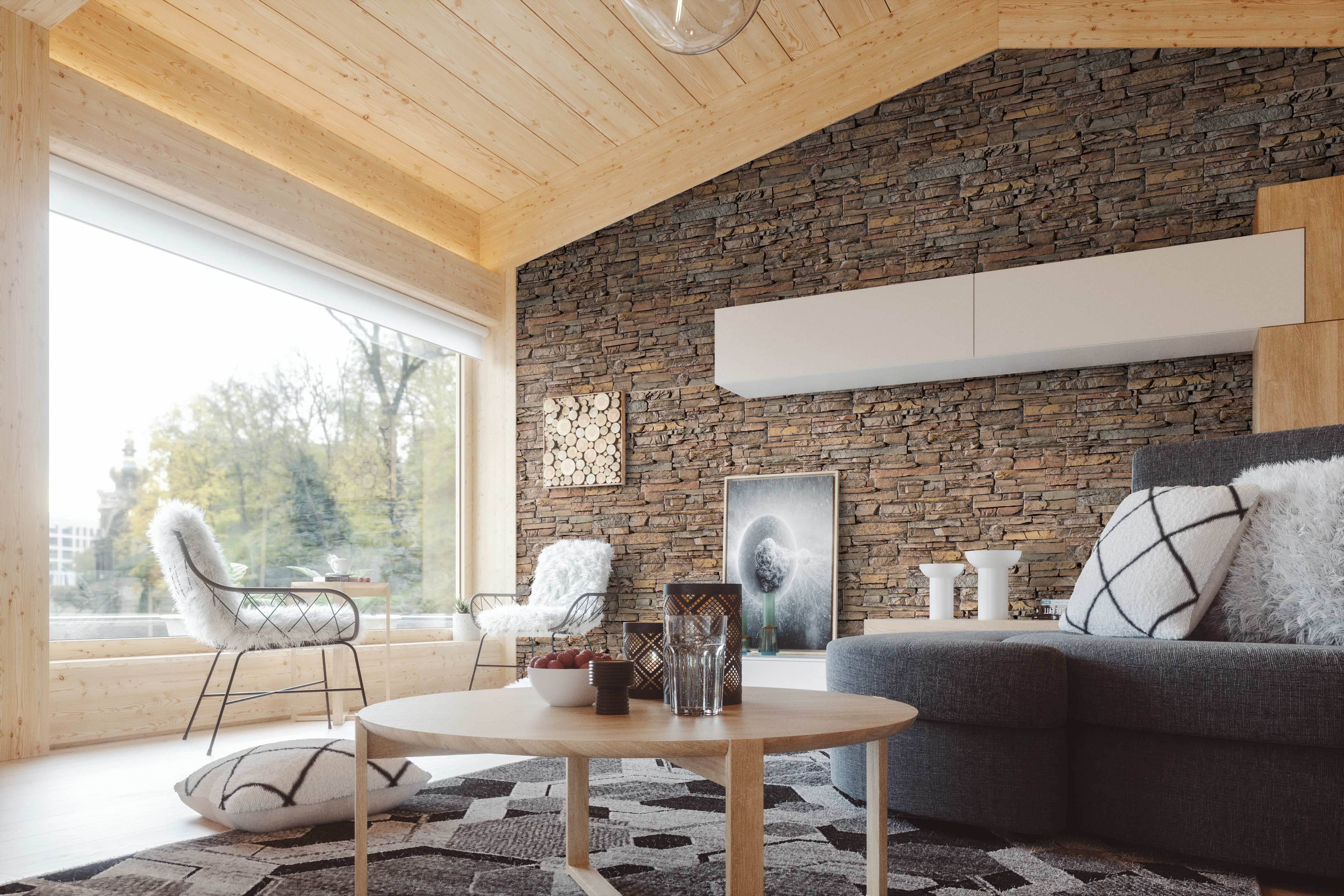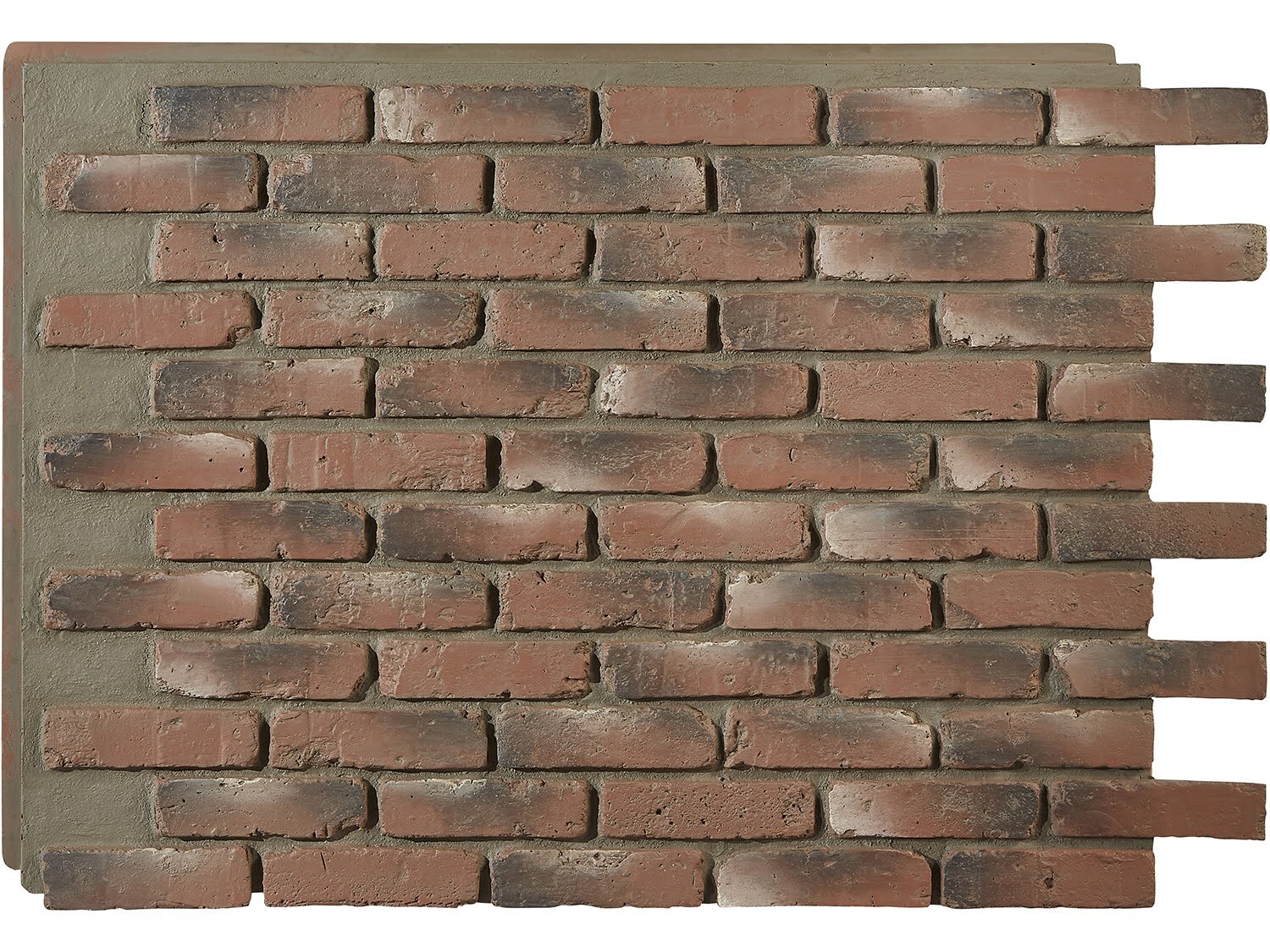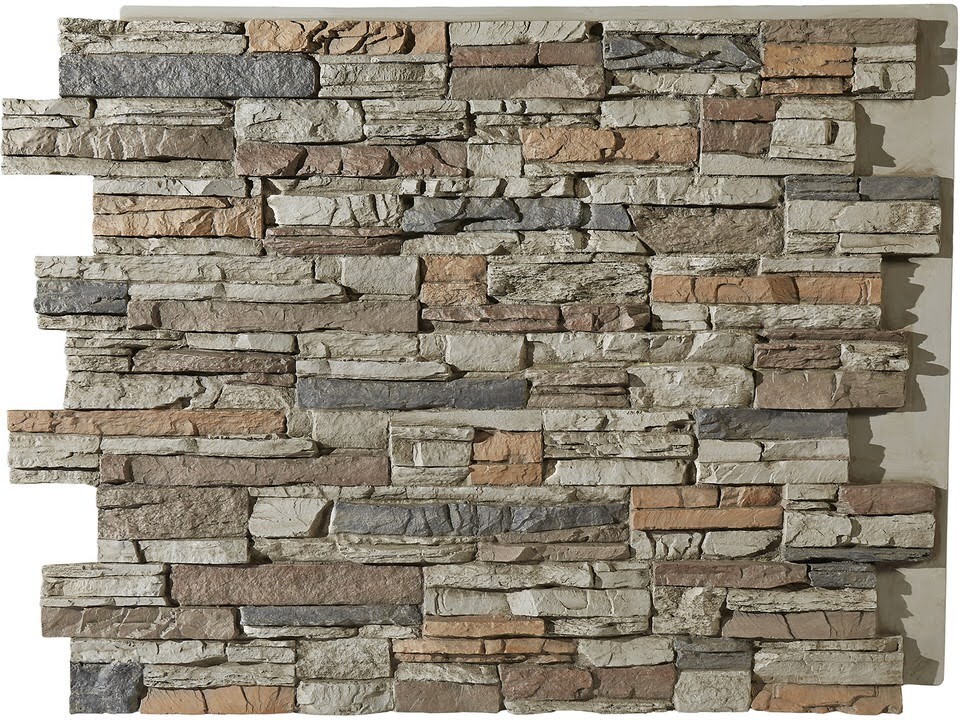
When it comes to taking a room from basic to beautiful, brick and stone are two of the most preferred materials. Both can completely transform the look and feel of a home or commercial space by adding warmth, color, and texture.
For some, real brick and stone veneer is cost-prohibitive and too difficult to maintain. Fortunately, faux brick and stone veneer is cost-effective, easy to install, and gives you the same gorgeous look as the real thing.
In this blog, we compare real brick and stone veneer versus faux brick and stone veneer to help you get the look, texture, and aesthetic you want, at a price you can afford.
Table of Contents
-
Defining Brick and Stone Veneer
-
Brick Veneer vs. Stone Veneer: What's the Difference?
-
How to Choose Between Brick and Stone Veneer
-
Faux Panels vs. Real Brick and Stone Veneer
-
Shop Faux Brick and Stone Panels
Defining Brick and Stone Veneer
First, it’s important to define what exactly we mean when we say “brick veneer” or “stone veneer.” These terms are often used in reference to different products. Understanding these products will help you choose the right brick or stone veneer for your budget and project.
What is Brick Veneer?
 Old Medford Faux Brick Wall Panels in Whitewash Brick
Old Medford Faux Brick Wall Panels in Whitewash Brick
Brick veneer is made of thin slices of real kiln-fired clay bricks or synthetic material that has been molded and painted to look like real brick.
Brick veneer made from synthetic materials, such as high-density polyurethane, is referred to as “faux brick panel”, “faux brick veneer”, or “faux brick siding”. Faux brick veneer is much lighter than real brick veneer, which uses thin brick slices arranged on a panel.
Either option can be used on an interior or exterior for a boost of curb appeal. Exterior brick veneer is used only for aesthetic purposes and is not structural.
What is Stone Veneer?
 Denver Dry Stack Faux Stone Wall Panels in Terra Brown
Denver Dry Stack Faux Stone Wall Panels in Terra Brown
Like brick veneer, stone veneer can be made using real, natural stone, or synthetic materials. Stone veneer can consist of any of the following materials:
-
Thin slices of real stone arranged on a panel (natural stone veneer).
-
Slices of stone-like material made from cement, pumice, pigments, and other materials.
-
High-density polyurethane molded and stained to mimic real stone (faux stone veneer).
Both real and faux stone veneers are made of thin materials that can be adhered to a wall, column, or other interior or exterior surface.
Brick Veneer vs. Stone Veneer: What’s the Difference?
The main distinction between the two is the aesthetic. Brick veneer has the orderly look of uniform brickwork, whereas stone veneer has more variation from panel to panel.
Below are other differences to consider.
Texture
Brick veneer has the same texture as real bricks, either because it’s made from real brick, or because it’s carefully molded to mimic that texture. It’s clean and consistent with all the rigid textures and straight lines you’d expect from a brick wall.
On the other hand, stone veneer has a wide range of variations, depending on the types and shapes of stones being used/molded. Some have large, round river rock textures, while others provide the rugged appearance of stacked limestone. This provides a great deal of visual interest that can be tailored to your preferences.
Color
Real brick panels will have the uniform coloration of bricks, from dark reds and browns to concrete grays and blues. This creates the clean appearance of hand-laid bricks that some prefer in their homes or businesses. Faux brick panels have the same clean look and are available in several different colors.
However, from panel to panel, stone veneer displays a wide range of colors. Available in browns and reds, yellows, oranges, and blues, there are many possibilities with stone veneer. A quality faux stone veneer is hand-painted to mimic the natural variations in color for a gorgeous, earthy look.
Price
If you’re making a design decision based on stone veneer vs. brick cost, you’ll be pleased to know that they are relatively the same.
Polyurethane faux brick panels and faux stone panels made from the same material cost about the same since the only difference is the texture used in creating the mold.
Alternatively, real stone veneer can cost more than real brick because it uses pricier materials that aren’t readily made in a factory.
Overall, faux veneer is going to cost less to purchase, ship, install, and maintain compared to real stone or brick veneer.
|
At a Glance: Faux Brick Veneer vs. Faux Stone Veneer |
||
Brick Veneer |
Stone Veneer |
|
|
Clean, consistent look |
✔ |
|
|
A dynamic, rugged look |
✔ |
|
|
Wide range of colors |
✔ |
|
|
Uniform coloration |
✔ |
|
|
Easy to install |
✔ |
✔ |
|
Lightweight |
✔ |
✔ |
|
Durable |
✔ |
✔ |
|
Budget-friendly |
✔ |
✔ |
|
Resistant to pests |
✔ |
✔ |
|
Resistant to fading |
✔ |
✔ |
|
Interior or exterior use |
✔ |
✔ |
How to Choose Between Brick and Stone Veneer
 Rustic Brick Wall
Rustic Brick Wall Denver Dry Stack Faux Stone Wall Panel
Denver Dry Stack Faux Stone Wall PanelWhen planning a total room transformation using brick or stone veneer, it may be hard to choose which one is best.
Although the decision is ultimately up to you, it's important to consider the overall look you’re going for.
If your bedroom has bright colors, unique furniture, and eclectic artwork, choose a simple brick veneer for your accent wall. Typically, brick will give you a cleaner, man-made look that plays well with bolder designs.
Stone veneer radiates natural, rugged flair. The rustic patterns and variation in color from panel to panel add visual interest to your design. In the bedroom example above, stone veneer may not be the best choice, since the room already has several eye-catching features. Instead, use stone veneer in spaces that could benefit from additional color, texture, and dimension.